Where are the best leaders to guide cultural changes while securing implementation of the most efficient strategies?
Understanding how strategy, culture & leadership are connected to drive success.
In the fast-changing world we live in, company cultures and strategies are deeply impacted by concepts like workable work, feel good@work, sustained collegial emulation, efficient remote/home versus office-working, in-company generated creativity and innovation, proprietary and distinctive (corporate or branded) added value, etc.
Only the best leaders are capable to guide transition towards an efficient equilibrium between traditional business concepts and newer ones, benefitting all stakeholders: the employees, the clients, the shareholders and the society.
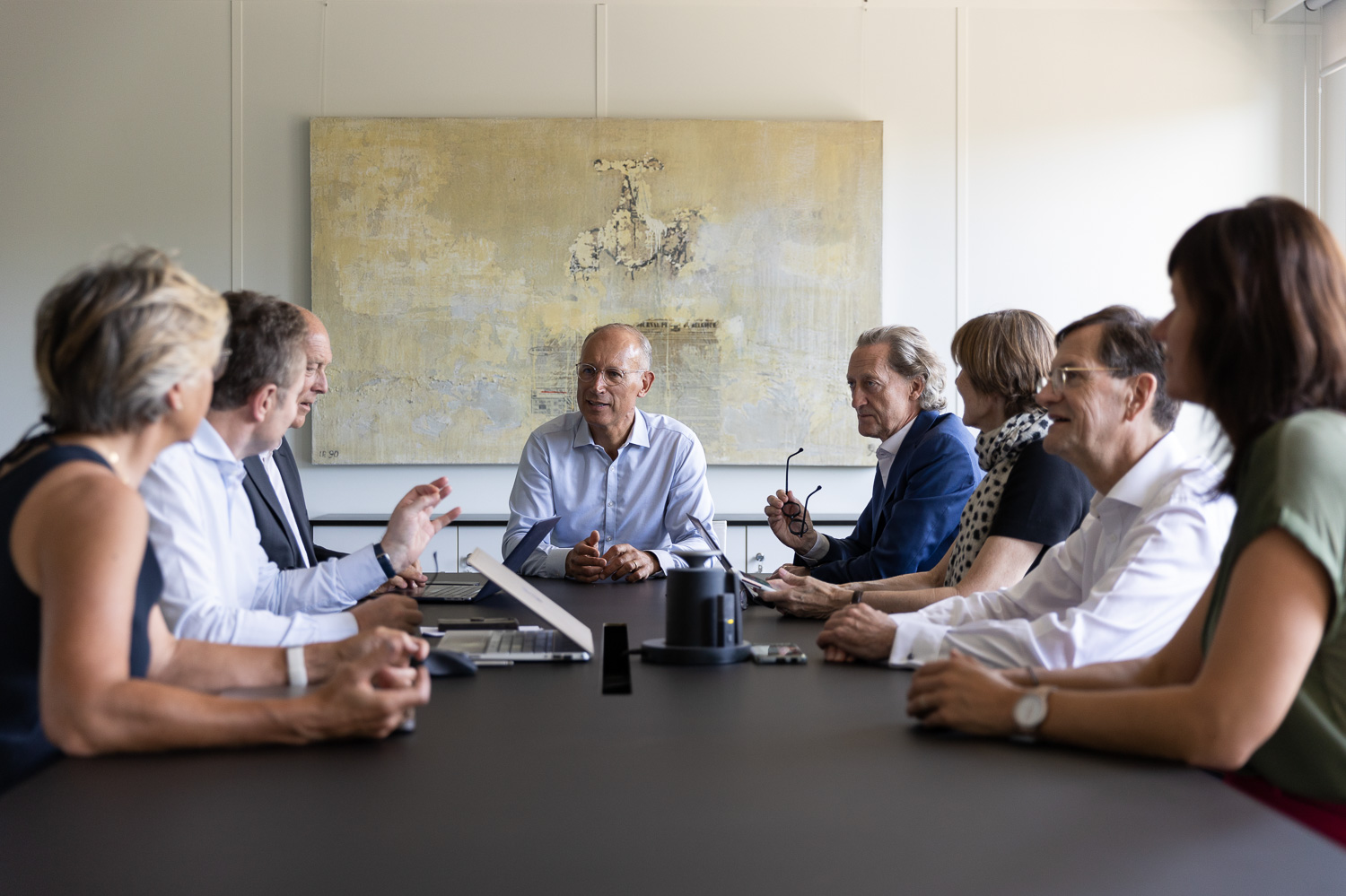
Drawing on a thought-provoking conversation with Denis Gallant and Stefaan Verduyn, both Partners with Hoffman, this article delves into the intertwined dynamics between Leadership, Strategy and Culture. Read on to explore how these essential organisational components intersect and leverage those insights to find the right leader for your needs.
![]()
Success: what’s in a word?
« Think of the leader of an organisation as the driver, with the strategy serving as the roadmap to the intended destination and the culture as the fuel to power progress. » Stefaan Verduyn

These elements are integral to achieving success and ensuring the company stays on track.
But before we dive deeper into how Leadership, Strategy and Culture integrate, let’s quickly go back to the basics. Although there is no one-size-fits-all approach for achieving excellence in each area, recent studies have pinpointed critical factors that hold special significance in the post-pandemic business landscape.
Findings also validate the pressing need to synergise all three dimensions for elevated outcomes.
Strong leadership
Leadership is the process of influence and guidance. Effective leadership goes beyond just managing people. It is about driving the processes (operations) and vision (purpose) towards success (1).
Robust strategies
Strategy is the long-term plan and roadmap towards a defined goal. If anything, the Covid crisis has emphasised the importance of instilling efficiency to achieve aspirations in times of uncertainty. More than ever, employees expect transparency, a clear direction and a shared vision (2).
Solid culture
Culture is a complex and fluid mix of behaviours and beliefs. It is most effective from a performance standpoint when individual and organisational values align. The pandemic has brought about a shift in personal values, and many organisations are now pivoting to prioritise human capital, agility, and communication, as opposed to the “traditional ‘processes focus’ on finance and effectiveness” (3).
![]()
Exploring the nexus: engagement and cohesion as performance drivers
« To ensure congruency between Leadership, Strategy, and Culture, it is imperative to thoroughly assess all three dimensions and fully understand how they impact each other. » Denis Gallant
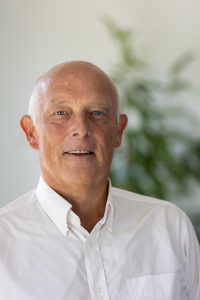
Although challenging, this approach is crucial in directing executive searches towards the best match, retaining top talent, and ultimately enhancing organisational performance. Here are a few ways in which these dimensions interact to boost overall efficiency through increased engagement and cohesion.
Leadership and strategy: Building (a shared) vision
Co-construction with team members and effective communication help cultivate a sense of ownership and connection. Leaders who actively involve their workforce generate more buy-in and commitment.
Leadership and culture: Creating the right conditions
Front-line leadership – or “leading through example” – can inspire and model behaviours that ultimately shape the organisation’s culture, steering the ship in the right direction (strategy) and getting everyone on board.
Strategy and culture: Bringing the purpose to life
Culture is the bedrock of successful strategy execution. It determines how people implement the strategic vision. When personal values resonate with those of the organisation, a powerful synergy takes hold, spurring dedication, passion, and heightened productivity across the board.
![]()
3 questions you may ask yourself to choose the right leader
With that many variables to consider and ponder, starting the headhunting process can be overwhelming. Hoffman’s partner Denis Gallant stresses the importance of the intake exercise, which involves leveraging the right analytical tools to clarify the strategic drivers and assess the culture and leadership: “A pivotal aspect of the executive search process at the outset of a mission involves engaging in a detailed dialogue with the company’s leaders or decision-makers to understand who they are, how they operate and what they are looking for. And to ensure a thorough and top-notch executive search process, we rely on a set of three essential questions that we consistently explore with our clients.”
These questions lay the groundwork for a comprehensive framework that guarantees the best possible outcomes:
1. Which strategic driver are you prioritising?
Treacy and Wiersema’s Value Disciplines Model is particularly helpful in effectively identifying strategic drivers and promoting a clear sense of purpose. It emphasises three core strategies for achieving company success: product leadership, customer intimacy, and operational excellence. To succeed, a company must excel in at least one of these critical dimensions while still meeting market standards in the others. Not only does this tool provide the framework for companies to strategically position themselves and maximise their potential for success but it also sheds light on the type of culture and leadership required for that strategy to come to life.
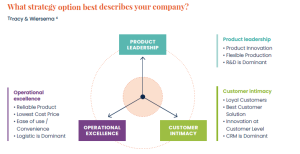
2. What phase are you currently in?
The Company Lifecycle model is an essential instrument for assessing an organisation’s culture by determining its current phase. During the gold mining phase, for instance, ensuring sustainable profitability is the primary goal, which is best achieved through a steadfast commitment to continuous improvement. Conversely, transformational strategies reign supreme in the reinvention, crisis or touch-and-go phases, where rebounding and growth are top priorities. Needless to say, this impacts the organisation’s culture significantly and affects the type of leadership needed to navigate each phase’s particular challenges.
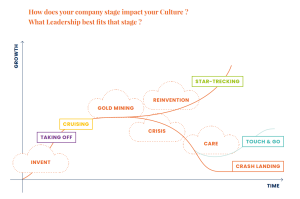
3. What leader best fits your company culture?
The Barrett Leadership Model digs into the values of employees, leaders and stakeholders to create a “deeper alignment of purpose across the organisation”. There are 7 distinct cultural identities that a company can potentially embody based on its strategy and lifecycle advancement. Rather than dictating which is preferable, this model seeks to identify the ideal leader for an organisation’s culture.
For instance, if an organisation strives for operational excellence and finds itself in the cruising phase, it would be advisable to contemplate leadership profiles closer to the performance manager archetype.
Overall, combining the Cultural Leadership Model with the other two questions generates powerful insights and accurate candidate profiles.
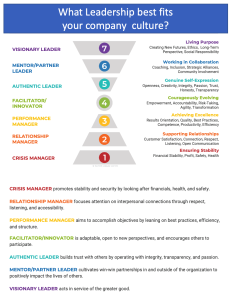
![]()
How Hoffman can help: blending first-hand experience with HR expertise
Once the “big picture assessment” is over, the search and candidate assessment can begin. With a blend of HR expertise and hands-on experience as leaders and managers, Hoffman’s experts have an in-depth understanding of the unique needs and requirements associated with top-level management roles.
As pointed out by Stefaan Verduyn, the mere evaluation of a candidate’s qualifications and experience is certainly not enough when it comes to hiring for a specific leadership position. To make an informed decision, it is vital to fully understand his/her expectations and drivers: “Our comprehensive approach to candidate assessment involves carefully crafted structured interviews to evaluate skills, but also preferences and values. The goal is to ensure that after six months or one year, they not only demonstrate excellence but also remain committed for the long haul”.
All partners of Hoffman Executive Search are experienced leaders and highly perceptive trendwatchers.
Hoffman assists companies in identifying challenges during transitions. We search for and evaluate potential leaders best suited to guide organisations through effective transformations that yield sustainable outcomes and satisfaction.
Please feel free to contact us if you wish advice and professional support in your executive search journey
Ineke ARTS | ia@hoffman.be |
Jean-Michel LUCAS | jml@hoffman.be |
Michel GRISAY | mg@hoffman.be |
Mieke DHOORE | md@hoffman.be |
Stefaan VERDUYN | sv@hoffman.be |
Denis GALLANT | dg@hoffman.be |
Bart DELALEEUW | bd@hoffman.be |
Boulevard de la Woluwe 62, 1200 Brussels – Kouter 7, B101, 9000 Ghent
www.hoffman.be | + 32 2 779 52 52
(1) See Barrett Values Center, Leadership Perspectives. [online] www.valuescentre.com
(2) See Wiedemann C. (2020), The Great Transformation? The Cultural Implications of Covid-19. [online] www.valuescentre.com
(3) Ibid. See Wiedemann C. (2020), The Great Transformation? The Cultural Implications of Covid-19. [online] www.valuescentre.com
(4) See Michael Treacy & Fred Wiersema, The Discipline of Market Leaders, 1995